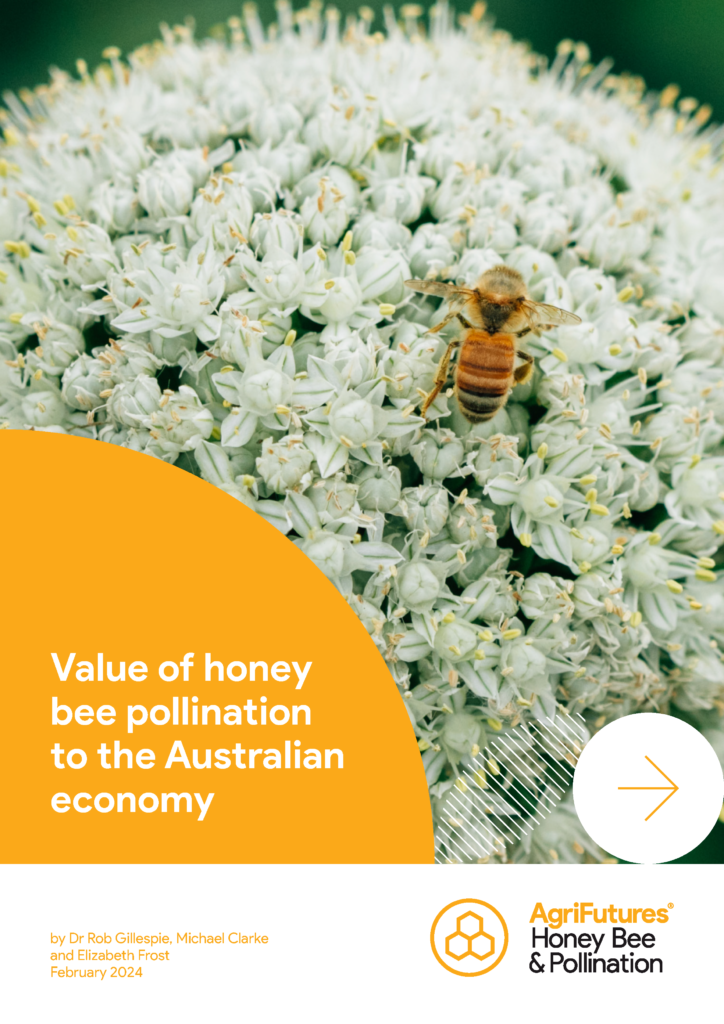Since the mid-1980s, economists have made numerous attempts at estimating the value of honey bee pollination to the Australian economy. The exercise is not straightforward, and a variety of valuation methods have been used in the past.
The purpose of this research was to review previous studies and the economic theory underpinning them, and use the results to prepare an authoritative valuation framework. The resultant framework, which incorporates the concepts of consumer and producer surplus and a partial equilibrium model, was then used to estimate the value of honey bee pollination to the Australian economy.
The study has delivered an updated, defendable and transparent estimate of the economic value of honey bee pollination. The estimate was prepared using 2020-21 gross value of production data and showed that crops worth $12.9 billion are at least partially reliant on honey bee pollination. The economic contribution (consumer and producer surplus) attributable to honey bee pollination is $4.6 billion.
This estimate is less than that of a previous and widely quoted study. It has been concluded that the different estimates produced by the two studies is due to application of estimation techniques, rather than any diminution in the contribution made by honey bee pollination. Researchers acknowledge growth in honey bee pollination-dependent cropping since the previous study and have expanded model coverage to include a record 67 crops.
The conceptual framework and the spreadsheet model have been provided to AgriFutures Australia so we can continue estimating the value of pollination to the Australian economy. AgriFutures Australia intends to update the estimate every three to five years.





